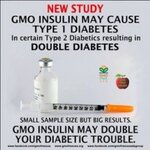Genetics & Molecular Biology

There is no existing cure for the common cold. The reason is simple: it is caused by a family of viruses with hundreds of variants, making it nearly impossible to become immune to or vaccinate against all of them. On top of that, the viruses evolve rapidly, meaning they can quickly gain resistance to drugs.
But there may be some new hope. A paper in Nature Chemistry discusses a new molecule, IMP-1088, that dual inhibits human N-myristoyltransferases NMT1 and NMT2 protein. Viruses 'hijack' NMT from human cells to construct the protein 'shell', or capsid, which protects the virus genome.
All…

A small study published in Hypertension resurrects the notion that oral antioxidants, broadly dismissed as ineffective, could reap measurable health benefits if they are bioavailable. And it was in older people.
The study consisted of 20 healthy men and women age 60 to 79 from the Boulder area. Half took a placebo and half took 20 milligrams per day of a commercially available supplement called MitoQ, which is Coenzyme Q10 which uses chemistry to allow the antioxidant to penetrate the membrane of mitochondria, the energy factories of our cells.
After six weeks, the researchers assessed…

In 1923, Frank Silver and Irving Cohn published a song that became a major hit for the Billy Jones Orchestra, with the signature line “Yes, we have no bananas; we have no bananas today.” It turned out to be sadly prophetic as, in the 1950s, the banana trees that supplied the entire global banana export business were wiped out by a soil-borne fungal disease known as “Panama Wilt.”
The industry at that time was almost entirely based on a single banana cultivar called “Gros Michel” (meaning “Big Mike”), and it was susceptible to infection by a strain of fungus…

Though genetically engineering food using science remains controversial in some circles, with concerns about genetically modified corn syrup in candy and claims that CRISPR can somehow be harmful whereas mutagenesis-derived foods can be labeled organic, progress marches on.
We're on our way to 9 million people and existing agriculture could easily handle it...if great agricultural land were evenly distributed. But is isn't evenly distributed, which is why the US and Europe can have robust markets for food created using an organic-certification process. Yield does not matter, just profit…

It may seem like olden days to millennials, but the late 1970s were a lot like today. America was divided due to an unpopular President, gas was expensive, the movie industry was at death's door ... and genetic engineering was a big concern.
GMOs were a worry 40 years ago? Didn't they just come out in the 1990s? The answer is 'yes' to both. The legal term "GMO" was due to a patent in the 1990s, but before then the first commercial genetically modified organism was insulin for diabetics. If you are not familiar with insulin, it's a hormone produced by the pancreas that regulates blood…

Hydrogen peroxide (H2O2) is best known for use in bleach and hair treatments and is often invoked as a scary chemical by environmental groups promoting concern about food and products, but it is produced naturally in our bodies. A new study shows it is a useful chemical across nature; plants use it to control how their cells react to varying levels of light.
Like preventing plant sunburn.
Hydrogen peroxide is a by-product of photosynthesis in parts of plant cells called chloroplasts, much like it is in our bodies by cellular respiration. Using a fluorescent protein that detects…

The documentary film Food Evolution provides a fresh,
scientific look at the technology of crop genetic engineering and some
situations it has, or could, help solve problems for farmers. It shows the ugly politics and distortions
that have maligned a useful technology that has served farmers well for twenty
years, worldwide.
Response to the film has been quite polarized. Many that have seen it report an even-handed science-based evaluation of a technology.
Still others, including some prominent academics, claim the film is
simply propaganda, paid for by the “agrichemical…

Since 2014, China has spent $4 billion on advanced agricultural science and is approving new technologies rapidly. Meanwhile, our food science regulatory system remains trapped in the 1980s, paralyzed by environmental lobbyists who buy full-page ads in the New York Times claiming they are "unsure", it just "needs more testing."
Now, maybe you are not worried about China. It's true, they are rather terrible in science. They learn by rote, which is why their kids beat ours on standardized tests, but when it comes to creativity America is number one. But how will we continue to be number one if…

A new paper found that the gene-editing technology CRISPR-Cas9 can introduce hundreds of unintended mutations into the genome, important as it starts to move into clinical trials.
CRISPR-Cas9 editing technology—by virtue of its speed and unprecedented precision—has been a boon for scientists trying to understand the role of genes in disease. The technique also has raised hope for more powerful gene therapies that can delete or repair flawed genes, not just add new genes.
Most studies that search for these off-target mutations use computer algorithms to identify areas most likely to be…

Though men and women obviously differ, that has become muddled in the name of equality. Drug reactions are different, obviously one gender gives birth to children.
A new study shows there are still many similarities, but also a whole lot of biological differences not in genes, but in gene expression. Their findings showed that harmful mutations in these particular genes tend to accumulate in the population in relatively high frequencies, and the study explains why. The detailed map of these genes provides evidence that males and females undergo a sort of separate, but interconnected,…